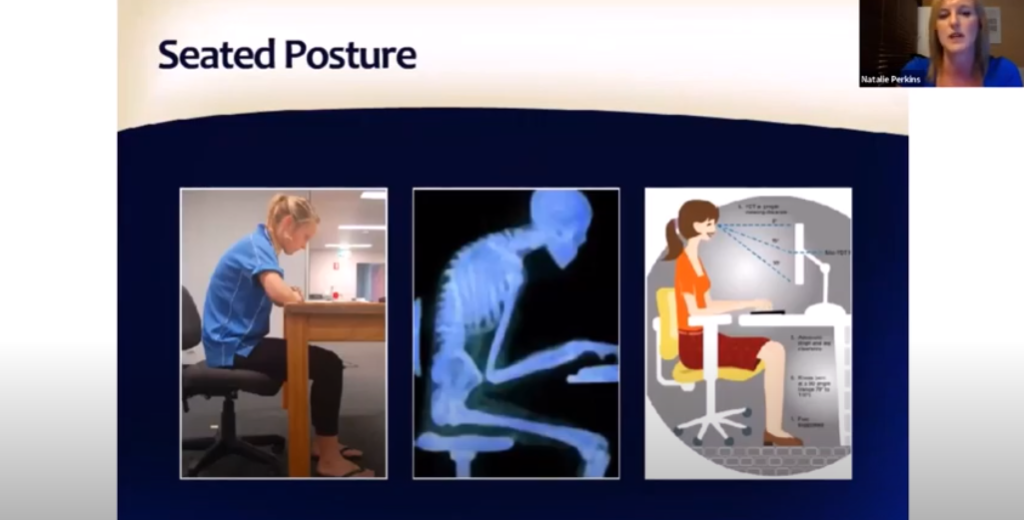A Real Pain in the Neck!
Our morning webinar session last week with Natalie Perkins on “the biomechanical approach to neck pain and how this impacts treatment” was a real eye opener to how we can manage the pains in our neck - and our patient’s pains of course!
Natalie joined us from Sydney, Australia and discussed the different aspects that can lead to neck pain like our posture, traumatic injury, and the menopause. We explored, in some detail, the anatomy that is affected, how to assess and, importantly, our treatment approach!
It was really interesting to learn about the effects of our posture in a world where we predominantly sit down hunched over a phone or a laptop. Natalie explained how this has a real impact on our health and how we should look to change our day to day posture.
The result of poor posture leads to a protracted head position which puts a lot of strain on the upper traps, levator scapulae and erector spinae muscles, and this is when we see our patients.

Now – after an assessment, would you say that the pain our patients feel would be caused by their muscles being too WEAK meaning they can’t maintain proper posture? Yes – that is what I thought too, well…
In many cases… WRONG!! – Natalie helped us think about how these muscles are actually over-active, constantly trying to stabalise a very heavy head that is not in the correct biomechanical position.
Correcting posture takes time so what do we need to help reduce the load on these over active-muscle groups and manage their pain?
Predominantly in clinic, we utilise positive pressure treatments i.e. trigger points, massage etc., which have been proven to be effective for relieving some of the tissue stress. These methods, however, are often uncomfortable for the patient AND us therapists!
The targeted negative pressure is a way to decompress the tissues, increase blood flow, and relieve her patients of the tension without having to subject our patients to discomfort whilst simultaneously saving our own hands! The treatment is a comfortable, controlled, objective method that can be precisely used around the neck.
To support our treatment we need to consider rehabilitation so, do you provide the patients with any stretches for the neck? A controversial question we know – Natalie’s answer – NO!
Why? Well, as mentioned earlier, often the muscles that are causing the pain and restrictions are because they are over-active, not because they are tight/weak. So stretching them will bear no benefit.
Instead, she looks to unload those tissues and finding the patient’s optimal load without inducing pain.
Finding these optimal loads for rehabilitation, helps the patient train their body back to a good posture and engage the smaller muscles in the neck to support the larger muscle groups.
Overall, the session covered some really good points that, importantly, question our practice and ask us the question – could we be offering something better for our patients.
Watch the neck pain webinar below:
8:51 - 12:45 How does posture cause my pain?
12:52 - 16:28 Pressures on the spinal column
23:20 - 28:09 The issues with seated posture
29:57 - 35:28 Treatment for upper back muscles using LymphaTouch
40:25 - 40:55 Treatment for neck muscles using LymphaTouch
42:08 - 43:49 Damage vs Dysfunction
54:53 - 56:59 Q&A: Do you use stretching as part of your neck programme?
To keep to date or register for any of our upcoming events, sign up to our newsletter, or follow us on social media.
Natalie has built a very unique model of care at Bodyworks Physiotherapy & Sydney Whiplash Centre and she has done this with the BTE Multi-Cervical-Unit (MCU) for her objective assessment and rehabilitation programs and the LymphaTouch for the treatment of neck pain.
These technologies have improved her clinical outcomes and generated lots of new patients and revenue. If you are interested in finding out more about how this can be added to your practice.
Please contact Physiquipe at info@physiquipe.com for any further information.

